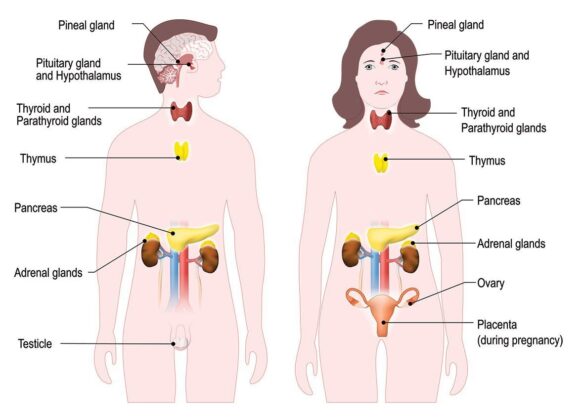Are Endocrine Disruptors Really a Threat to Health?
Are Endocrine Disruptors Really a Threat to Health?
Medscape Medical News, December 5, 2024
At its 40th congress, the French Society of Endocrinology hosted a public lecture on the subject, given by Nicolas Chevalier, MD, PhD, professor of endocrinology at the University Hospital of Nice in Nice, France said, “We are swimming in a soup of endocrine disruptors.”
These chemicals include bisphenol A (BPA) and its substitutes, parabens, phthalates and pesticides. Additionally, lithium (mainly found in batteries), polychlorinated biphenyls, per- and polyfluoroalkyl substances, and polybromodiphenyl ethers, or brominated flame retardants, are included.
The main source of human contamination is food, responsible for an estimated 80%-90% of those encountered. They may enter the food supply during production or preservation, and pesticides are not the only culprits. For example, fatty fish contain heavy metals.
Many other features in our daily environment contain EDs: Clothing (especially shoes), nonstick cookware, plastic containers (especially those heated in the microwave), plastic toys (which young children often put in their mouths), and cosmetic products (makeup, which is increasingly used by young girls). The placenta is not the barrier it was once thought to be: Amniotic fluid has been found to contain about 35 molecules that are toxic for the fetus, with at least 11 or 12 exceeding safety thresholds.

Diagram Source: Endocrine Society of Australia
Multiple Linked Diseases
An incomplete list of ED-related diseases would include cancer, infertility, obesity, and diabetes, Chevalier said. US studies have shown that pesticide presence in the environment contributes to cognitive delays in young children.
Another area of concern is the rising infertility rates among couples, now affecting around one in five in France. This trend has been linked to the toxicity of EDs on the genital tract, especially in men, and is not only related to increased use of birth control. For example, in sub-Saharan Africa, rates of contraceptive use have increased only marginally, but birth rates have significantly decreased in areas contaminated by waste that is inadequately managed by Western standards.
EDs have also been implicated in the rising incidence of several cancers, including breast cancer in women and prostate cancer in men, and may have contributed to increases in both childhood obesity and adult diabetes.
What can we do?
The ideal situation would be for the public to take matters into their own hands by eliminating EDs from their environment through daily actions that pressure policymakers to act.
For example:
- Eliminate plastics (especially for food products) and nonstick coatings
- Reject most cleaning products in favor of traditional solutions (eg, white vinegar and baking soda)
- Avoid imported toys (as producer countries often fail to comply with European health standards)
Source: Are Endocrine Disruptors Really a Threat to Health?
************************************************************************************************************************

